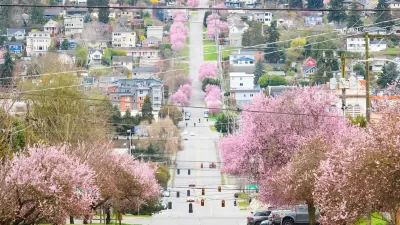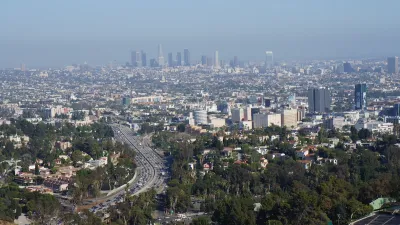Cities like Seattle and Bellingham are working to increase housing density while also preserving urban trees and green spaces.

After Washington state passed sweeping zoning reforms to encourage more ‘missing middle’ and multifamily housing production, prompting new questions about sustainability and the conservation of the urban tree canopy, “Cities in Washington are working to give those trees more importance in their planning considerations, centering urban forestry in their community strategies,” writes Clifford Heberden in The Urbanist.
According to Brennon Staley, Strategic Advisor for the Seattle’s Office and Planning and Community Development, “development in dense places like Seattle prevents further sprawl on the fringes, preserving more land and natural resources from development.” Seattle also signed on to the Tree Equity Collaborative, “a statewide partnership to achieve tree equity across the Evergreen State by expanding and fortifying neighborhood tree canopy cover.” If passed by the city council, the updated Urban Forest Protection Ordinance would require street trees with new residential developments and create new protections for existing trees.
In Bellingham, the city is working to balance the need for new housing with conservation with a new Urban Forestry Management Plan, slated for completion this summer. “Bellingham touts 40% tree cover within city limits, representing 7,252 acres of the diverse canopy. The goal is to maintain that percentage across the city.” Bellingham touts the benefits of its ‘urban villages,’ areas that encourage compact development and help preserve outlying green spaces. “Permit data as of March 2022 indicates a total of 2,800 housing units were added in Urban Villages, representing 40% of all new housing in Bellingham since 2006.”
FULL STORY: Bellingham and Seattle Balance Urban Forestry with Housing Needs

Planetizen Federal Action Tracker
A weekly monitor of how Trump’s orders and actions are impacting planners and planning in America.

Congressman Proposes Bill to Rename DC Metro “Trump Train”
The Make Autorail Great Again Act would withhold federal funding to the system until the Washington Metropolitan Area Transit Authority (WMATA), rebrands as the Washington Metropolitan Authority for Greater Access (WMAGA).

The Simple Legislative Tool Transforming Vacant Downtowns
In California, Michigan and Georgia, an easy win is bringing dollars — and delight — back to city centers.

The States Losing Rural Delivery Rooms at an Alarming Pace
In some states, as few as 9% of rural hospitals still deliver babies. As a result, rising pre-term births, no adequate pre-term care and "harrowing" close calls are a growing reality.

The Small South Asian Republic Going all in on EVs
Thanks to one simple policy change less than five years ago, 65% of new cars in this Himalayan country are now electric.

DC Backpedals on Bike Lane Protection, Swaps Barriers for Paint
Citing aesthetic concerns, the city is removing the concrete barriers and flexposts that once separated Arizona Avenue cyclists from motor vehicles.
Urban Design for Planners 1: Software Tools
This six-course series explores essential urban design concepts using open source software and equips planners with the tools they need to participate fully in the urban design process.
Planning for Universal Design
Learn the tools for implementing Universal Design in planning regulations.
Smith Gee Studio
City of Charlotte
City of Camden Redevelopment Agency
City of Astoria
Transportation Research & Education Center (TREC) at Portland State University
US High Speed Rail Association
City of Camden Redevelopment Agency
Municipality of Princeton (NJ)





























